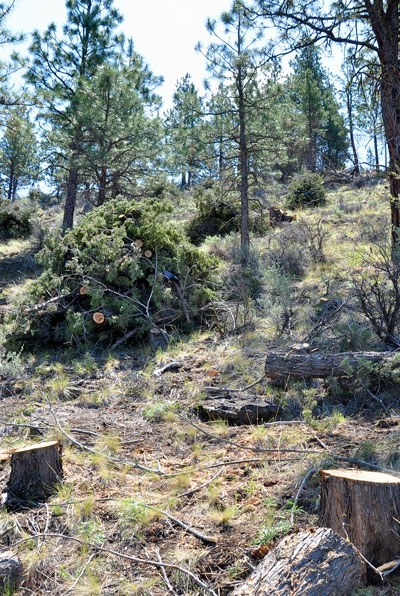As homeowners in fire-prone Central Oregon, most of us work to create and maintain defensible space around our homes.
This means we clear brush, trees, and other flammable materials near our houses, so we can help firefighters keep fire away from our homes. As a local Land Trust, it's important we also do our part to manage our lands and our forests in a way that complements these efforts, while at the same time improving overall forest health and wildlife habitat.
An example of this is the forest restoration work we completed at Whychus Canyon Preserve several years ago when we thinned more than 100 acres. We targeted small-diameter juniper to help reduce the threat of wildfire for our neighbors while also helping the remaining ponderosa pine and aspen thrive. We are already seeing the benefits of this work, as native wildflowers and bunchgrasses have spread into the thinned areas and populations of aspen and pine are rebounding.

Normally we would begin this forest restoration work by cutting and piling the small-diameter trees in the spring, drying the piles over the summer, and then burning them in the winter. But our resident golden eagles take precedence at Aspen Hollow Preserve, so we like to keep things quiet while they're raising their young from February - June. Our hope is that, once the eagle young have left the nest, we can begin our forest restoration work. This cut, pile, and burn process will all be done by hand since the terrain is fairly inaccessible, making it difficult to remove trees without causing significant disturbance.
In the coming years, we plan to implement similar work at Willow Springs Preserve and Whychus Canyon Preserve. These projects will likely coincide with stream restoration work at each Preserve so we can use some of the thinned trees in and around Whychus Creek as part of restoration efforts. Stay tuned for more details on these projects!
Learn more:
- About historic conditions in healthy east Cascade pine forests.
- About the Land Trust's Whychus Canyon Preserve forest restoration.
- About the Land Trust's Metolius Preserve forest restoration.


